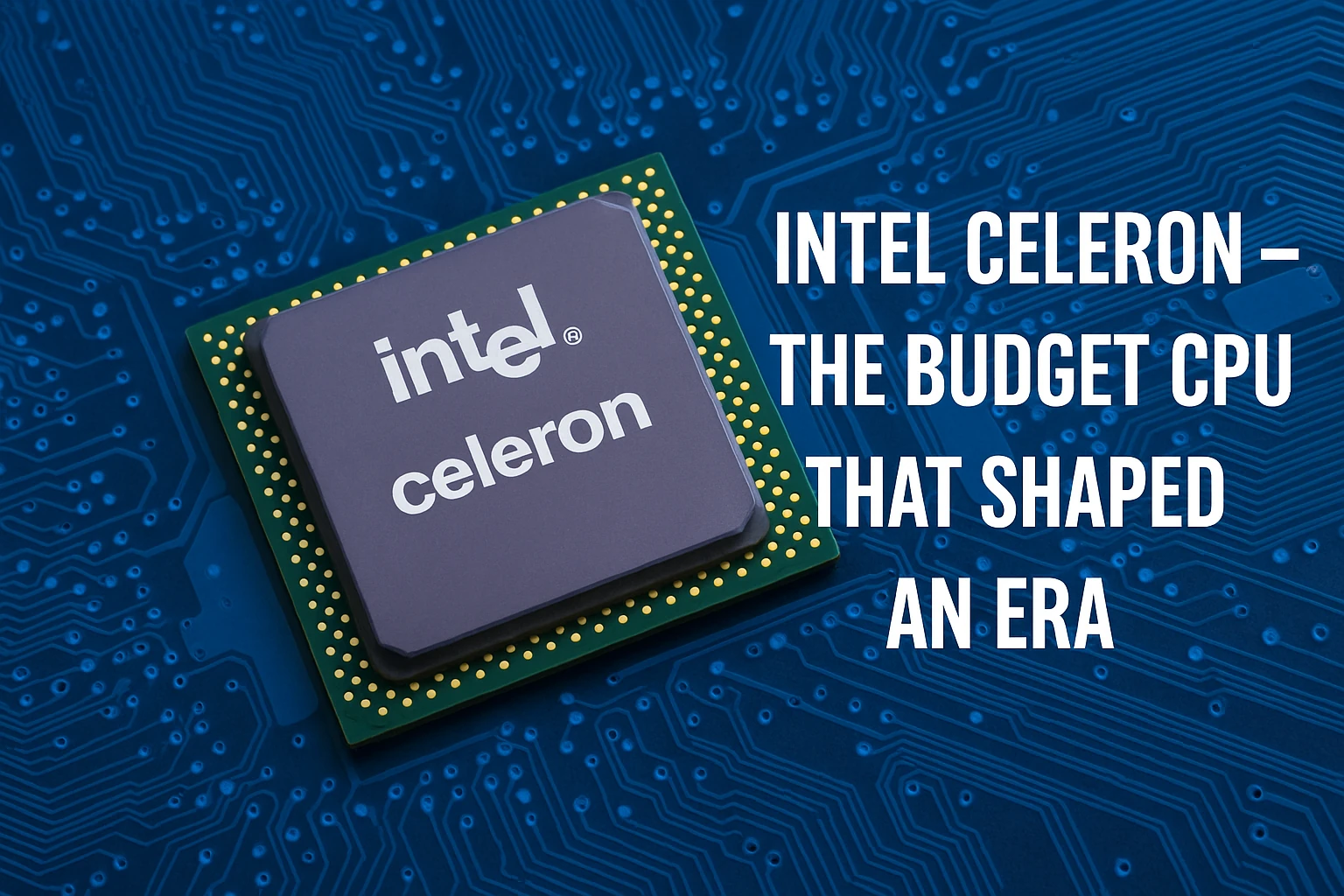Intel Celeron – The Budget CPU That Shaped an Era
Introduction
Introduced in 1998, the Intel Celeron was designed as an affordable alternative to Intel’s premium Pentium processors. While often criticized for performance cuts, the Celeron became a staple in budget PCs, schools, and offices—and even had some hidden surprises for enthusiasts.

1. The Birth of Celeron (1998)
First Model: Covington (266-300 MHz)
- No L2 Cache – A stripped-down Pentium II, leading to terrible performance.
- Slot 1 (SEPP) – Same cartridge design as Pentium II but cheaper.
Mendocino (1998-1999) – The Game Changer
- 128KB On-Die L2 Cache – Massive improvement over Covington.
- Socket 370 (PPGA) – Shifted from Slot 1 to a more cost-effective socket.
- Popular Models: 300A, 333 MHz – legendary overclockers (often hitting 450-500 MHz).
2. Key Generations & Innovations
1. Tualatin Celeron (2001-2002)
- 0.13µm Process – More efficient than Pentium III Coppermine.
- 256KB L2 Cache – Nearly matched Pentium III performance at lower clocks.
- Overclocker’s Dream – Many chips reached 1.4 GHz+ on air cooling.
2. Celeron D (2004-2007)
- NetBurst Architecture (Prescott core) – Hot but clocked high (up to 3.6 GHz).
- EM64T (64-bit support) – Late to the game vs. AMD’s Athlon 64.
- LGA 775 – Transition to modern sockets.
3. Core-Based Celerons (2007-Present)
- Based on Core 2 Duo, Nehalem, etc. – Still budget-focused but more capable.
3. Celeron vs. AMD Duron/Sempron
| Feature | Intel Celeron (Tualatin) | AMD Duron (Morgan) |
|---|---|---|
| Architecture | P6 (Pentium III) | Thunderbird (Athlon) |
| L2 Cache | 256KB | 64KB |
| Clock Speeds | 1.0-1.4 GHz | 1.0-1.8 GHz |
| Overclocking | Excellent (Tualatin) | Good (Morgan) |
Verdict:
- Celeron Tualatin was the best budget CPU of its time.
- Duron had better raw performance but worse cache.
4. The Legacy of Celeron
- Still Alive Today – Used in low-power laptops and mini-PCs.
- Educational Market – Dominated school computers for decades.
- Nostalgia Factor – The 300A and Tualatin remain cult favorites.
Where Are They Now?
- Modern Celerons (e.g., Jasper Lake) are Atom-based ultra-budget chips.
- Collectors hunt for Tualatin and Mendocino models.
Conclusion
The Celeron was never the fastest, but it was accessible. It brought computing to millions, challenged AMD’s budget offerings, and even had moments of overclocking glory. For many, it was their first CPU—and that counts for something.
Tags: #Intel #Celeron #BudgetCPU #RetroTech
Published: 2025-06-08
The author may have used AI technologies to create the article, and it might contain inaccuracies or errors.